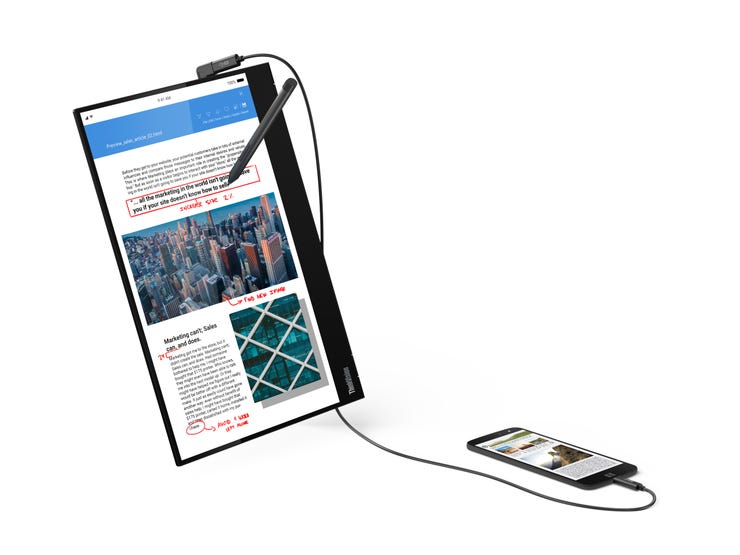Flexible Work is here to Stay, Here’s How to Make it Work
As businesses and employees grapple with the normalisation of flexible working, investing in the right technologies will form the foundation to empower and enable staff to work better, regardless of where they will be.
Speak to any staff who works flexibly and it's clear that technology is often a game changer and a key catalyst for whether the arrangement becomes rewarding for both employee and employer.
A phone, a laptop, and a speedy Wi-Fi connection easily come to mind as the most basic requirements for working remotely, say, at home or on the go, in the new normal today.
However, one area that many have not considered is the addition of a second screen to increase productivity and improve the user experience of working at different locations.
Indeed, the screen is the single area that information workers focus on the most today, because that is what they will spend the most time on during any given workday. So, does it make sense to move from a single to a dual screen setup?
The experts say yes. In a study by the University of Utah in 2007, researchers found that dual-screen configurations were most preferred among users. They showed an average of 15% higher usability values than single screen displays and 2% higher than widescreen displays.
Respondents using the dual-screen configuration were 3% faster in task completion, generated 1% more production, were 8% faster in completing each edit, were 7% faster in each edit over the entire task, and had a 33% lower error rate than when using a single-screen configuration, as averaged over the text and spreadsheet tasks.
The ratio of total time per edit was significant, noted the researchers. In other words, respondents did the work faster and got more of the work done with fewer errors, they explained.

Challenges and reasons for a second screen
Despite the clear benefits, there are several reasons why a second screen has not been popular as it should be. Chief among these is the space it requires. For many users, working from home already requires additional space that they may struggle to find, especially if they are living in a small apartment.
Another challenge is the lack of portability. While a large monitor is a useful addition, it cannot be easily carried around when a user goes to a meeting or visits a café. As a permanent fixture, it also takes up space, a luxury that many users do not have.
The situation changes, however, if there is a second screen that is easy to set up and move around. Unlike a desktop monitor, a portable screen could be plugged easily to a laptop or a PC to expand the information that could be shown at one go, yet be stowed away when not in use.
Plugged into a laptop, it brings additional screen real estate. This enables a user to quickly compare documents between two screens without having to keep switching between windows on, say, a spreadsheet or text document.
Connected to a phone, a second screen could run the productivity apps on the small device like a laptop would, enabling a user to fire up a document on the fly, wherever he is.
More than a screen
More than just a simple display, this second screen can be a lot more. With touch capabilities, it could act as a tablet for a customer to sign up an insurance plan on. With a kick stand that comes with USB ports, it could let you easily connect your USB drives and other devices.
This is what Lenovo's ThinkVision M14t USB-C monitor offers. A portable 14-inch screen that weighs just 698 grams (Display component only, actuals might slightly vary), and is only 4.6mm thick (Display head only, actuals might slightly vary), it easily fits into any laptop bag.
With Full HD resolution, it offers clarity and sharpness for the everyday tasks that users typically come across. The 300-nit brightness means it can work in various different locations, including brightly lit ones. Another plus is the TÜV Rheinland Low Blue Light technology, which lets users work with minimal eye strain.
A lot more than a screen, the M14t is also a handy companion to have on the go, at home, or in the office. Its 10-point touch functionality, for example, lets users design, animate, present, and annotate with their fingers or the Lenovo active digital pen.
Ease of use is key. The additional dual USB-C ports let power pass through to the M14t and compatible USB-C devices connected to it, so you don't have to bring so many power adapters with you on the road.
In the flexible work environment of the future, the M14t will bring the innovative edge that workers need to be more productive and creative. No matter where they are working, the improved experience will empower both employee and employer to meet tomorrow's challenges with confidence.